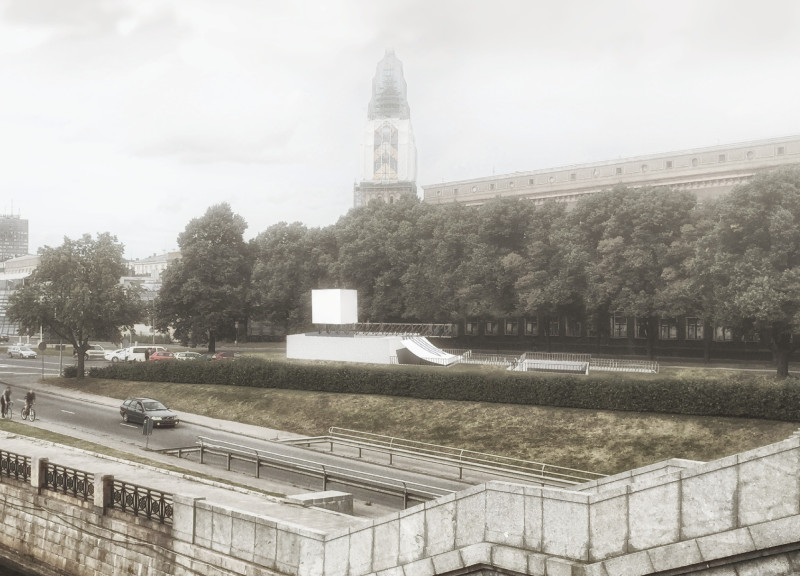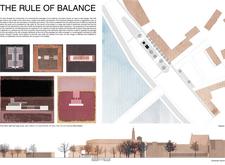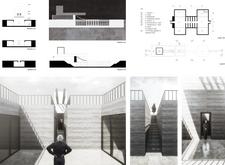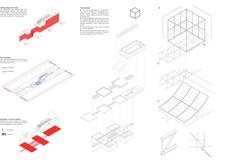5 key facts about this project
At its core, the project represents a meeting point of diverse activities. It functions as a multipurpose space that accommodates various community needs, including cultural events, educational programs, and casual gatherings. The design carefully delineates distinct areas within the building, promoting a sense of place and purpose. Key components of this project include well-designed atriums that facilitate social interaction, projection rooms for multimedia exhibits, and inviting café and bookshop areas that enhance the public realm. Each area is interconnected by a thoughtfully curated pathway that invites visitors to traverse the space with ease.
One aspect that distinguishes this project is its approach to materiality, which plays a pivotal role in both aesthetics and functionality. The primary material, concrete, is utilized to create a robust yet sophisticated structure that conveys durability and permanence. Complementing this are steel elements that provide structural integrity and modern elegance, demonstrating a harmonious blend of materials that aligns with the overarching concept of balance. Expansive glass façades introduce transparency, fostering a connection between the indoors and the natural environment outside. The thoughtful use of materials extends to landscaping features, with green roofs and vertical gardens offering ecological benefits and enhancing the overall experience of the space.
The architectural design showcases unique approaches that address sustainability and human interaction. Natural light is carefully harnessed through the strategic placement of skylights and expansive windows, illuminating the interior and minimizing reliance on artificial lighting. This emphasis on natural illumination contributes to an inviting atmosphere and reduces energy consumption. The shape and layout of the building have been carefully considered to promote accessibility and circulation, making it user-friendly for all demographics. Multiple entrances allow for smooth transitions between indoor and outdoor spaces, while internal pathways guide users intuitively from one function to another.
An integral element of "The Rule of Balance" is its focus on community impact. By providing a versatile hub that accommodates a variety of activities, the project fosters a sense of belonging and encourages cultural exchange among users. Educational workshops, art exhibits, and community meetings find a home within this space, allowing for interactions that can enhance social cohesion. Additionally, the incorporation of green spaces within the design highlights a commitment to environmental well-being and biodiversity, contributing positively to the urban ecosystem.
This architectural project exemplifies a careful balance between form and function, offering a rich tapestry of experiences that resonate within the community it serves. The design reflects an understanding of contemporary needs while embracing timeless principles of architecture.
For those interested in a deeper understanding of this project, an exploration of the architectural plans, sections, and designs will reveal further insights into the innovative approaches employed. This comprehensive examination of "The Rule of Balance" invites readers to appreciate the intricacies of the design and its implications for modern urban living. In exploring the project's presentation, one can uncover additional details that enhance the appreciation of its thoughtful execution and community-oriented vision.



























